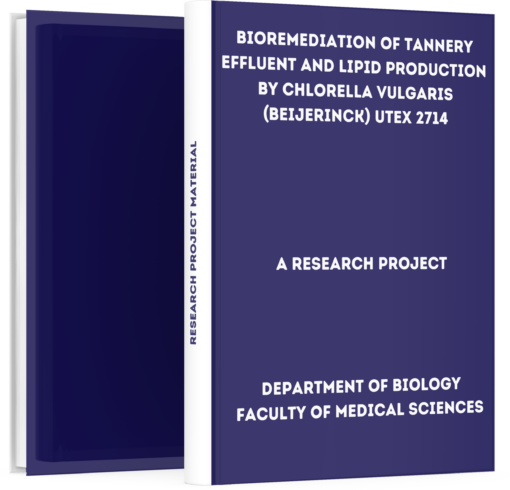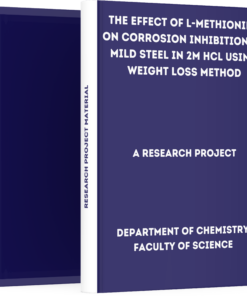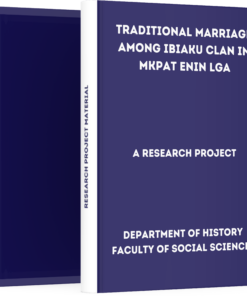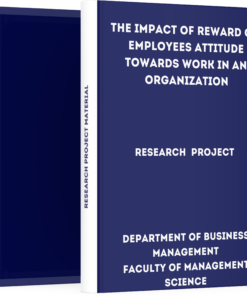Bioremediation of Tannery Effluent and Lipid Production by Chlorella vulgaris (Beijerinck) Utex 2714
₦3,000.00
If you are interested in getting this project material “Bioremediation of Tannery Effluent and Lipid Production by Chlorella vulgaris (Beijerinck) Utex 2714”, click on the DOWNLOAD BUTTON to make payment and the file will be delivered to your email immediately after confirmation.
Description
– Bioremediation of Tannery Effluent and Lipid Production by Chlorella vulgaris (Beijerinck) Utex 2714 –
Download Bioremediation of Tannery Effluent and Lipid Production by Chlorella vulgaris (Beijerinck) Utex 2714. Biology students who are writing their projects can get this material to aid their research work.
Abstract
This study was aimed to assess the potential of Chlorella vulgaris UTEX 2714 to grow and bio-remediate tannery effluent.
Tannery effluent was collected from an effluent stream from Tanneries in Challawa Industrial Estate, Kano. The effluent was sterilised and inoculated with 10 % volume of algal inoculum.
Hydrogen potential, conductivity and total dissolved solids were determined using Hanna combo pH/EC meter HI 98129. Phosphate, sulphate, free chlorine and nitrate were determined using HACH DR 2400 spectrophotometer.
Standard methods were used to determine alkalinity, dissolved oxygen, biological oxygen demand and chemical oxygen demand titrimetrically.
Introduction
The environment is under increasing pressure from anthropogenic activities all over the world. In the quest to satisfy his needs and aspiration for better living conditions, man generates different kinds of waste that are discharged directly or indirectly into the environment (Ezike et al., 2012).
Tannery effluent is a by- product of the manufacturing and transformation of hides and skin to leather products. It constitutes an environmental concern as it increases the pollution status of rivers (Midha et al., 2008).
Tannery waste is generated in huge amounts during the process of tanning by leather industries throughout the world.
It is considered one of the most polluted industrial wastes and contains high amounts of metals which are very toxic to soil, plants and animals (Castilloss et al., 2007). Corporation/Municipal water treatment facilities in most of the developing countries, at present are not equipped to remove traces of heavy metals (Rajasulochana et al., 2009).
How to Download this Project Material
First, note that we are one of the best and most reliable online platforms because we don’t retain any of your personal information or data as regards making payments online.
PRICE: ₦3,500 ₦3,000 (Three Thousand Naira Only)
Make a bank deposit or mobile transfer of ₦2,000 only to the account given below;
Bank Name: UBA Account Number: 1022564031 Account Name: TMLT PRO SERVICES
After making the payment, CLICK HERE to send the following on WhatsApp;
- Depositor’s Name or Screenshot of Payment
- Name of the Past Question
- Active Email Address
or Call Us On +2348082284439 Once your details have been received and your payment confirmed by us, you will receive the past question in your email or WhatsApp within 5 Minutes.
Guarantee of Getting the Material
We understand that due to the high rate of fraud, many people are afraid of making purchases online but be rest assured that PastExamQuestions will deliver your material after payment.
Once your details have been received and your payment confirmed by us, you will receive the past question in your email or WhatsApp.
Give us Feedback
Have we been able to satisfy you? How well do you think the material will be helpful after having gone through it? Does the price worth the material?
Let’s hear from you! We recommend that our customers give feedback at the end of every transaction to enable us to serve better. You can do this by clicking the review button on this page.
Where is the review button? >> Just scroll up to where you see reviews





Reviews
There are no reviews yet.